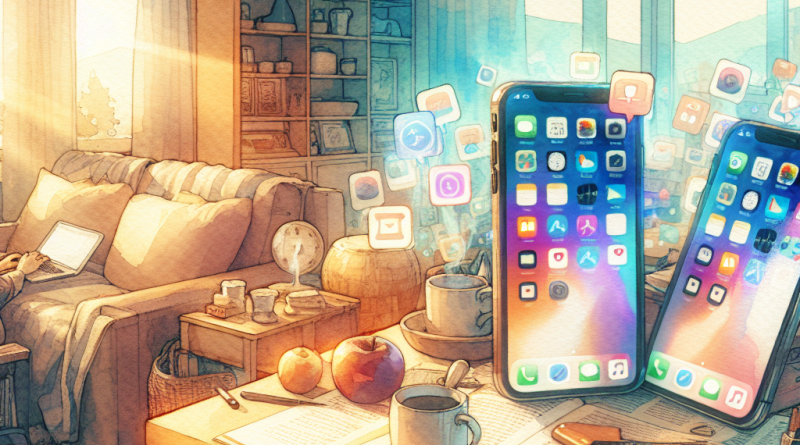How One Power User Solved Persistent iPhone Glitches with the Right Digital Tools: A Case Study
For most casual users, an iPhone is a seamless extension of everyday life. But when it starts acting up—random shutdowns, sluggish response times, or failed app launches—even the most sophisticated user can hit a wall. This case study walks through how one power user, James, overcame a cascade of persistent iPhone issues using a tool-by-tool approach. If you’ve ever uttered “Why is my iPhone doing this?”—read on. This is about real-world iphone troubleshooting help using advanced digital methods.
The Problem: A Cascade of Glitches
James, a digital marketer and mobile app developer, relies on his iPhone for not just calls and messages—but app testing, email campaigns, analytics, and workflow automation. Things took a turn when he noticed sluggish keyboard performance, app crashes, and frequent overheating. Initially, he dismissed these as one-off bugs. But as the issues escalated over weeks, he knew he had to dig in.
Stage 1: The Built-In Diagnostician—Apple’s Support Tools
James started with the basics. He used Apple’s Settings → Battery → Battery Health & Charging to determine whether aging battery performance was the issue. The status showed 89% maximum capacity—normal for a 2-year-old device. He then ran diagnostics via Apple Support Chat, which checks hardware issues remotely.
Result: No hardware faults detected. Still, Apple’s solution? Reset the phone. That’s not ideal for a power user with custom configurations, beta tools, and unsynced testing data. It was time to go deeper.
Stage 2: Third-Party Diagnostics—iMazing vs. Dr.Fone
James turned to third-party utilities, landing on two heavyweight tools: iMazing and Dr.Fone – Repair by Wondershare. Here’s how they measured up:
- iMazing: Known for its robust device management tools, iMazing offered James access to iPhone logs, crash reports, and app-use stats. Diagnosing app-specific issues was simplified, revealing that several apps in beta were calling deprecated APIs, causing system hangs.
- Dr.Fone – Repair: Specialized in system repair, this tool offered two modes—Standard (non-data loss) and Advanced (factory reset). It corrected iOS glitches without impacting his data. Ideal for mysterious anomalies like looping restarts and iMessage delays.
Result: iMazing helped James pinpoint problem apps. Dr.Fone restored his system health without wiping custom settings.
Stage 3: Cleaning House—CleanMyPhone vs. PhoneClean
Next, James tackled system bloat. He suspected that years of cache files, logs, and rogue cookies were bogging down his device. Once again, he pitted two popular digital tools against each other:
- CleanMyPhone by MacPaw: Like its sibling app for Mac, this tool offered a slick interface for deleting temporary files, large unused media, and redundant backups from iTunes syncs. Especially helpful was the “Silent Files” filter that removed app data left from uninstalled apps.
- PhoneClean by iMobie: Strong on privacy cleaning, it scoured messaging attachments, cookies, and location logs. Its deep-clean mode required a backup, adding time but ensuring nothing essential was lost.
Result: CleanMyPhone offered quicker results but PhoneClean was more thorough. James used both consecutively to supercharge performance recovery.
Stage 4: Resolving Network Issues—NetSpot vs. OpenSignal
James also had recurring Wi-Fi disconnects and a sluggish cellular connection in his office space. While most would blame the carrier, James knew better. He downloaded NetSpot and OpenSignal to profile network health from different angles.
- NetSpot (Mac-based): Offered a heatmap of Wi-Fi signal strength room-by-room. Revealed interference from a recently-added Bluetooth speaker in the adjoining room.
- OpenSignal (iPhone app): Benchmarked LTE signal strength vs. tower distance. Allowed James to locate a more stable zone in his space and switch to LTE manually for mission-critical uploads.
Result: A low-cost fix: repositioning the speaker and moving calls near the window. Small insights, big improvements.
Stage 5: Automation—Shortcuts App vs. Launch Center Pro
Post-repair, James wanted future-proofing through task automation. Which tool would best streamline his complex routines?
- Shortcuts App (Apple Native): Allowed basic automation like sending predefined texts, launching navigation, and controlling smart home devices. It also automated switching to 5GHz Wi-Fi after 6 pm when office bandwidth drops.
- Launch Center Pro: Offered customizable tiles and chain commands. Perfect for business hours: he configured a triple-tap shortcut to automatically open email, trigger calendar, and run a keyword search in Notion.
Result: He chose both—Shortcuts for default automations and Launch Center for deep customization.
Key Lessons for Casual Users
If James’s journey proved one thing, it’s this: you don’t have to settle for factory resets when your iPhone malfunctions. With the right digital tools, even casual users can become power troubleshooters. Whether identifying battery drain, app conflicts, or network issues, there’s a specialized utility for that.
iphone26.com specializes in iphone troubleshooting help that’s tailored not just to casual users but power users like James, who can’t afford to lose uptime or data fidelity. Our blog, tools, and consultancy services are built to bring out the best in your iOS experience.
Conclusion: Empowerment Through the Right Tools
James’s case serves as a reminder that iPhone issues—no matter how technical—are solvable through a thoughtful, tool-by-tool approach. From diagnostics to repair to optimization and automation, today’s digital toolkit empowers users more than ever before.
If you’re facing persistent iPhone issues, or you’re just ready to take your iOS performance to the next level, contact us for a demo of our advanced troubleshooting suite. At iphone26.com, we turn glitches into growth.

